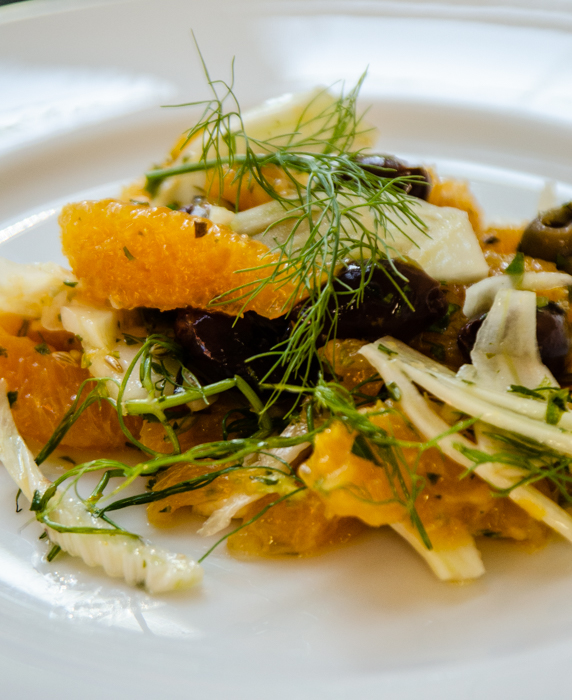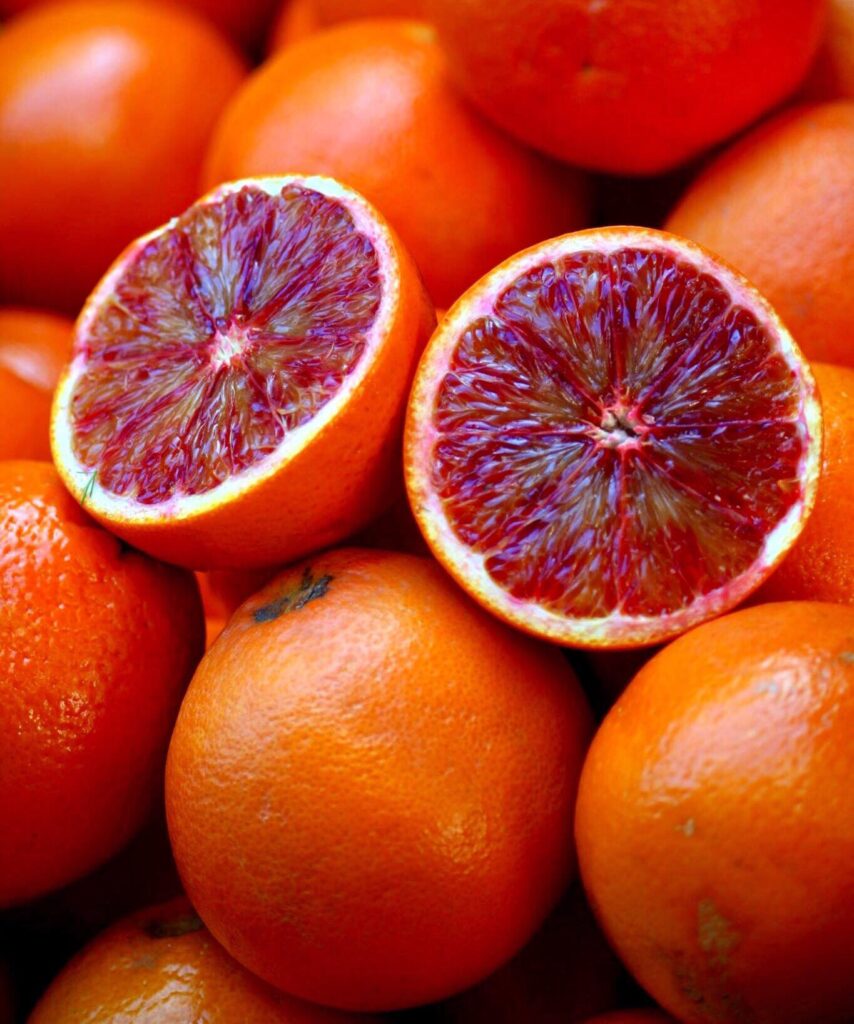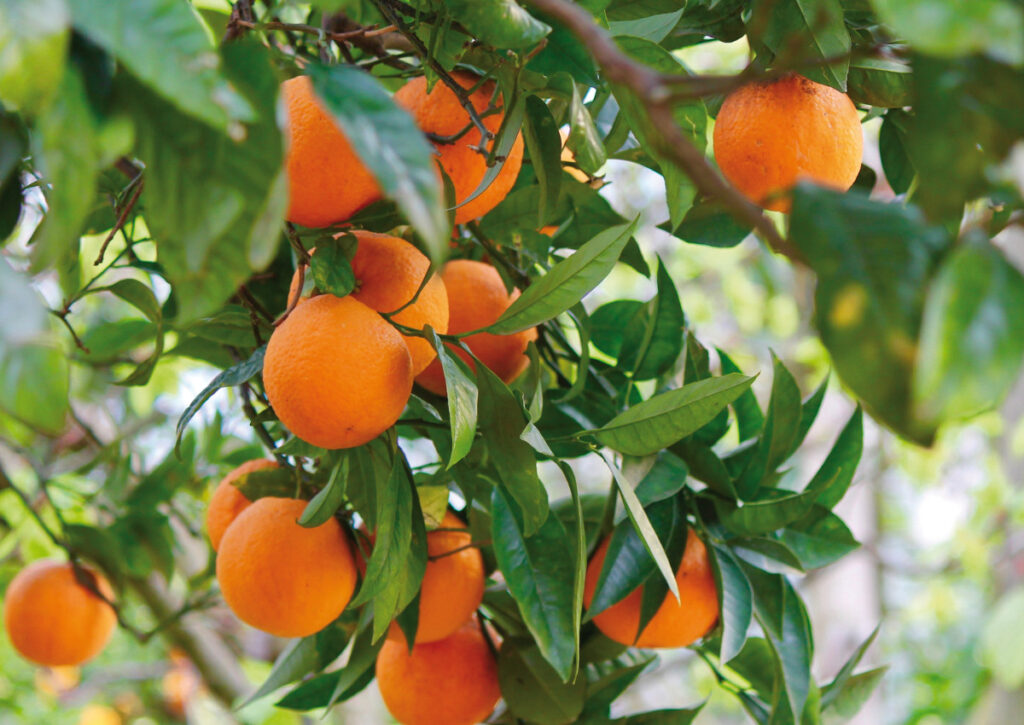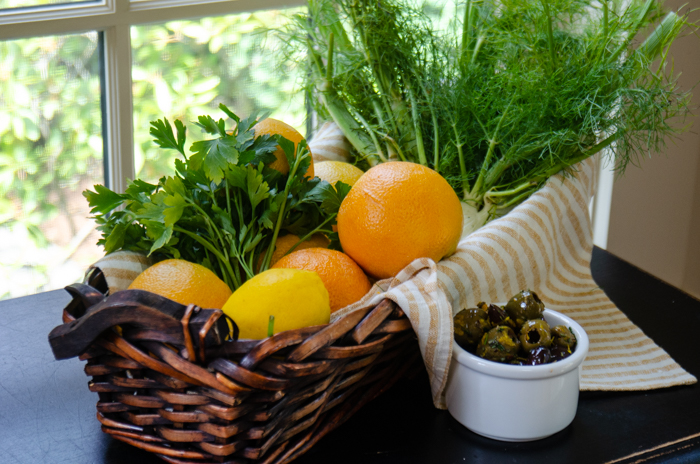
Exploring the lovely countryside of Sicily under sunny skies, we find the perfect ‘sunny’ delicacy to refresh us along the way – sweet, red-fleshed blood oranges. Citrus fruits arrived in Italy around 850 AD during an Arab invasion. Initially these oranges were bitter and yellow, but the mild, warm climate of Sicily allowed for the development of the sweeter, red varieties we see today.

The blood orange is actually a natural mutation of the orange, which is itself a hybrid between the pomelo and the tangerine. It’s distinctive dark red flesh color is due to the presence of anthocyanins, a powerful antioxidant which develops when hot daytime temperatures give way to chilly nights. The Catania plain, near the Mount Etna volcano, provides the exact conditions for these oranges to flourish and develop their deep red hue. Cultivation of these oranges has been an important economic activity for this area since the 18th century. Each year in late February, when orange production reaches its peak, the local community in Palagonia, a small province near Catania, hold a festival to celebrate their favorite citrus, The Sagra dell’Arancia Rossa. Other areas for cultivation include the Siracusa area, and also Enna in central Sicily. The Arancia Rossa di Sicilia (red orange of Sicily) has now earned Protected Geographical Status (PGI) from the European Union.There are three varieties of blood oranges:

Moro: Dark red pulp, with a slightly oval shape. It is a flavorful table orange, good for juice, rich in minerals and low-fat, with a high content of citric acid. It is the very first blood orange to ripen and it is available on the market from December to February.
Tarocco: This table fruit, considered the queen of oranges, is spherical, seedless and easy to peel. At the beginning of the production season its pulp is somewhat clearer, but, as the snow appears on Mount Etna, it becomes more and more red. It can be enjoyed from December to April.
Sanguinello: Seedless with a vinous red pulp and quite juicy. It ripens in February, but can remain on the plants until April.

In Sicily, blood oranges make their way to our table every meal, from a glass of juice with breakfast to savory salads and citrus flavored fresh fish to fruit desserts. Blood orange granita is a perfect refreshment after our daily trek or bike ride during our Italiaoutdoors Food and Wine adventures in Sicily. Here is a traditional Sicilian dish, a fresh salad with oranges, fennel and olives. Unfortunately, blood oranges are harder to find here in the US, but still a tasty salad with our native oranges, which is what I used here.
Insalata di Arance
Serves 8
3 – 4 fennel bulbs, thinly sliced, fronds reserved
8 oranges
3.5 ounces roasted olives
5 tablespoons extra virgin olive oil
juice of 1/2 lemon, strained
2 tablespoons chopped flat leaf parsley
Reserved fennel fronds
1 teaspoon fennel seeds
Kosher slat and freshly ground pepper
Make the dressing. In a bowl, whisk together the olive oil, lemon juice, parsley, fennel fronds and fennel seeds, if using. Season to taste with salt and pepper.
Cut off the peel from the oranges, removing all traces of the bitter white pith. Cut the flesh into rounds, put them into a large salad bowl and add the fennel and olives. Drizzle the dressing over the salad, mix well and serve immediately.
